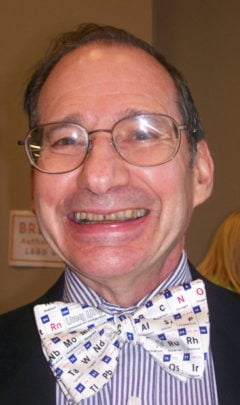A Bright Future: How Some Countries Have Solved Climate Change and the Rest Can Follow by Joshua S. Goldstein and Staffan V. Qvist (New York: Public Affairs, January 2019)
Reviewed for The Science Shelf by Fred Bortz
Despite disinformation campaigns by politically and financially well-connected groups, mainly in the United States, it is clear that public awareness is growing about the human causes and the impact of climate change on our future national, international, and economic security. Most Democratic candidates for President and Congress in 2020 now put climate change at or near the top of their political agendas, and some Republicans are recognizing that voters no longer accept climate-denial arguments.
But although those candidates agree about the need to respond to a looming crisis, there is still substantial disagreement in progressive circles about what the response should be. On the political level, the candidates differ over the “Green New Deal,” much of which goes beyond the climate crisis to address social and economic ills.
However, that is not the most divisive issue. At the nuts-and-bolts technological level lurks a more serious policy difference: What should be the role of nuclear power in our energy future? American University professor emeritus of foreign relations Joshua S. Goldstein and Swedish engineer and clean energy consultant Staffan V. Qvist wade into that question in their readable new book,  A Bright Future: How Some Countries Have Solved Climate Change and the Rest Can Follow.
A Bright Future: How Some Countries Have Solved Climate Change and the Rest Can Follow.
Their answer is unequivocal. Because emissions of greenhouse gases, mainly carbon dioxide and methane, are leading to serious warming and disruption of our climate, we urgently need to decarbonize the world’s energy sources on a massive scale. We can’t afford to wait for new technologies, but we are fortunate enough to have existing and designed nuclear power plants that can be deployed at the needed pace and scale.
The book seems to be aimed at traditional environmentalist voters who became engaged at a time when nuclear energy was as much as a bogeyman as fossil fuels, especially coal. Many of those voters now recognize that climate change is at least as great a problem as air and water pollution, but the historical connection of nuclear energy to weapons, concerns about nuclear waste, and high-profile nuclear accidents make many unwilling to consider nuclear power as a solution.
The authors lay out a credible case in clear and easily understood language, beginning with a chapter describing the rapid decarbonization that Sweden achieved through kärnkraft, a term they do not define until the end of the chapter, by which time most readers realize it means nuclear power. They then turn to Germany, which has successfully built up its wind and solar power infrastructure but has failed to reduce greenhouse gas emissions substantially because, in response to the 2011 Fukushima meltdowns, they shut down their nuclear power plants before the end of their designed lifetimes. The increase in renewables merely compensates for the loss of nuclear energy rather than displacing coal and gas-fired generators.
They include chapters that present the facts about how humans misperceive risks, how nuclear waste and proliferation issues can be handled, and political policies that can achieve the necessary rapid decarbonization to achieve the bright future of their title.
Still, despite its clarity and an organization designed to persuade its target audience–and even coining the appealing word “nuables” to describe their prescription of nuclear and renewables as a cure for the climate crisis–the book may not succeed in its objective. Rather than acknowledging critical readers’ discomfort with nuclear energy and working with that to change their minds, it comes across as pedantic.
Reading the book through those readers’ eyes, one can almost feel their hackles rising, as if they are listening to a scolding. That’s a shame, because the message is on target and important. One can only hope that it gets through and leads to the response the authors hoped to achieve.
Fred Bortz is the author of numerous books for young readers, including the “go-to” young adult book about the Fukushima events of 2011,  Meltdown! The Nuclear Disaster in Japan and Our Energy Future (Twenty-First Century Books, 2012).
Meltdown! The Nuclear Disaster in Japan and Our Energy Future (Twenty-First Century Books, 2012).

I got a comment from a climate change denier. I did not approve it.